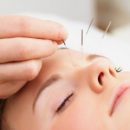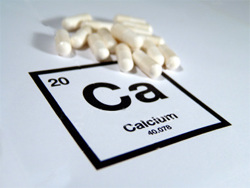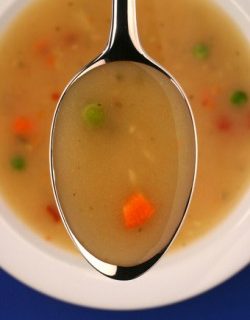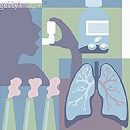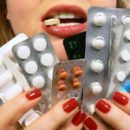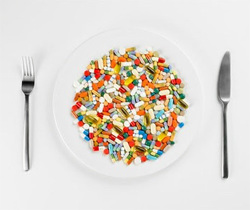
In the first part of the article about Polyvitamins We talked about those general principles that should be guided by selecting multivitamin complexes in order to prevent. Continued will correctly tell about the significance of a particular element for a person. We hope that with this article to our readers will be aware of the fact that it should not be independently selected by the specialized vitamin complexes appointed in therapeutic purposes to the elderly people, as well as people with deviations in the work of the cardiovascular system, in view and others. Only in case you want to improve the overall condition of the hair, nails, you can rely on your knowledge, and however, consultation with the doctor will only benefit.
The impact of vitamins and minerals on the body
Vitamins (from Latin. Vita - Life) - these are organic substances formed in the body or coming with food in very minor quantities, but absolutely necessary to ensure normal metabolism and livelihoods.
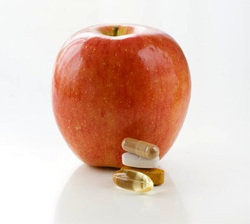
In 1956. A single classification of vitamins has been adopted, which has become commonly used. All vitamins are divided into 2 groups:
- fat-soluble vitamins: (A, D, E, K);
- Water soluble vitamins: (B1, B2, pantothenic acid, B6, B12, Folate, C, niacin, biotin).
Vitamins enter the organism with vegetable and animal food. Penetrated through the wall of the tract, they form numerous derivatives, which in conjunction with proteins form enzymes participating in metabolism. That is, vitamins are either part of enzymes, or are components of enzymatic reactions.
The lack of vitamins weakens the body, no violates the activities of the enzyme systems in which they participate, which leads to a violation of metabolism and, as a result, severe diseases. Harmful and overdose of vitamins, which can be caused by both excessive use of products containing large doses of vitamins and an uncontrolled reception of vitamin-containing drugs. Therefore, it is very important to know what effects have various vitamins on our body, in which kind of food they contain, and how the lack of (hypovitaminosis) or excess (hypervitaminosis) of one or another vitamin.
| Vitamin | Sources / Daily Norm | Hyovitaminosis | Hypervitaminosis |
| Water soluble vitamins | |||
| B1 Tiamine We are necessary for the work of the nervous system, gastrointestinal tract, liver, hearts. Participates in the metabolism, primarily a carbohydrate. Helps in the treatment of skin diseases | Legumes (peas, beans), cereals (oats, buckwheat), nuts (hazelnut, walnut, almonds), crude grain, yeast, coarse flour products, pork 1.3-1,5 mg for adults, 0.3 -1 mg for children | Headache, memory violation, insomnia, increased fatigue, deterioration of coordination; shortness of breath, hypotension, tachycardia, worsening appetite, nausea, abdominal pain, constipation, weight loss. When avitaminosis: Beri-take disease (damage to the nervous system, heart, swelling and general exhaustion) | Allergic reactions and anaphylactic shock, tremor, vomiting, urticaria, drop in blood pressure; With prolonged overdose, violation of the liver and kidney function |
| B2 Riboflavin Provides updating and restoring skin, mucous membranes of internal organs. Prevents the development of cataracts. Eliminates the negative impact of toxic substances on the respiratory organs | Liver, veal, fish, cottage cheese, cheese, eggs, milk, sour cream, kefir; Cereals (pearl, buckwheat, oatmeal), green peas, yeast, spinach, potatoes, cauliflower for adults 1.5-1.8 mg, for children: 0.4-1.2 mg | Impairment of appetite, weakness, headache, Twilight violation, rubber, cracks and peeling in the corners of the mouth, inflammation of the language and oral cavity, seborrheic dermatitis around the mouth, in nasolabial folds, on the wings of the nose, anemia | Disorders of the kidneck |
| B5 Pantothenic acid Promotes «Burning» fats and energy generation. We are necessary for immunity, nervous system, blood formation. Helps healing wounds, stimulates the intestinal activity | Liver, kidneys, egg yolks, fish and dairy products; peas, yeast, nuts, cereals (buckwheat, oatmeal), green leaf vegetables, cauliflower for adults about 4-7 mg, for children - 2-5 mg | Fatigue, increased fatigue, drowsiness, nausea, frequent organs, numbness, fingers on legs, dermatitis, appearance of white spots on the skin | Heartburn, nausea, vomiting |
| AT 6 pyridoxin Participates in protein and fat exchange, normalizes the work of the nervous system. Reduces cholesterol levels. Improves the work of the heart, stimulates blood formation | Beef, pork, lamb, milk, cheese, egg yolk, fish (salmon, ketch), cereals (buckwheat, millet), wheat flour, potatoes, cauliflower, carrots, yeast, soy, bananas about 2 mg for adults and 0, 3-1.4 mg for children | Increased fatigue, insomnia, dermatitis and stomatitis, lip cracks; worsening appetite, dyspepsia; Anemia in children | Urticaria, circulatory disorder in limbs, blood clot formation, blood clotting |
| AT 12 Cyanocobalamin Participates in cell division (blood, immune cells, skin cells and intestinal mucosa cells). We are necessary for immunity, brain work, reproductive system. Normalizes low pressure. | Only animal products: liver, kidneys, meat, fish (herring, tuna), milk, cottage cheese, eggs, cheese, seafood 2 μg for adults, 0.3-1.4 μg for children | Disrupted digestion, ulcerative disease of the stomach and duodenum; headaches, drowsiness; violations of memory and vision; Heavy anemia | Allergic reactions: urticaria, swelling of quinque; Peripheral vessel thrombosis, heart failure |
| Bwith Folic acid We are necessary for blood formation, maintenance of neuropsychic equilibrium, immunity, digestion. Prevents the development of intrauterine defects during pregnancy | Rude grinding flour, green vegetables (cabbage, parsley, salad, onions), legumes (peas, beans, soy), yeast, carrots, cereals, oat and buckwheat cereals; Liver, kidneys, meat, chicken, cottage cheese, cheese, egg yolk for adults 0.15-0.2 mg, for pregnant women 0.4-0.6 mg, for children 0,025-0.1 mg | Anemia, atrophy of the dump truck and respiratory tract, malformations of the fetus, premature labor | Dyspepsia in children, excitation of CNS |
| WITH ascorbic acid Need to health vessels. Improves blood formation, has anti-inflammatory effect. Increases the rehabilitation capacity of the body | Citrus, green vegetables (onions, cabbage, broccoli), Bulgarian pepper, black currant, rowan, apples, sea buckthorn, rosehip, parsley, sorrel, nettle, horseradish, plantain, etc. herbs; A little bit in the liver and kidney 60 mg per day for adults, for children - 30-45 mg | Reducing immunity, frequent infectious diseases, bleeding gums, joint pain | Increase blood clotting, heartburn, kidney stones, blood sugar increase |
| Pp niacin Exists in forms: nicotine acid and nicotinamide. Activates brain activity, digestion, bile. Prevents the development of cardiovascular diseases and diabetes. Nicotinamide reduces pain in arthritis | Meat, liver, kidney and heart, fish, eggs, cheese; potatoes, green peas, tomatoes, peppers, cabbage, cereals (especially buckwheat), legumes, peanuts, solid grain, beer yeast, mushrooms about 20 mg for adults, for children - 5-12 mg | Pain in the limbs, reduction of blood sugar, cracks and skin inflammation, muscular weakness with avitaminosis: Pellagra disease (dermatitis, diarrhea, psyche disorders) | Redness of the skin of the face, neck, hands and chest and the feeling of heat; Heartbeat, decrease in blood pressure, blood sugar level, urticaria, dizziness |
| N Biotin Helps the absorption of glucose, reduces blood sugar content, helps the absorption of protein and burning fat, improves the state of the nervous system. Need for skin, hair growth and nails | Yeast, bean, mushrooms, green onions, colored and white cabbage, coarse flour; Liver, egg yolk, milk for adults about 0.1 mg, for children 0.01-0.03 mg | Seborrheic dermatitis, anemia, hair loss, dry skin with a grayish tint | ---- |
| Fat-soluble vitamins | |||
| BUT Retinol We are necessary for vision, skin cells, mouth mucous membrane, gastrointestinal tract, respiratory and urinary tract. Helps the production of sperm and eggs. Accelerates skin healing processes | Carotenoids (Provitamins a): Carrot, Pumpkin, Sweet Pepper, Tomato, Spinach, Broccoli, Green Onions, Parsley Greens, Bean, Soy, Apples, Melon, Rosehip, Bakery. Vitamin A only in animal products: liver, solid milk, cream, oil, cheese, cottage cheese, sour cream, eggs, fish oil for adults 1 mg, for children 0.4-0.7 mg. The value may be indicated in: for vitamin A 1 mg = 3333 | Violation of twilight «Chicken blindness», xerophthalmia (dry cornea dryness), conjunctivitis, deterioration of skin condition (dry, peeling, purulent inflammation, furunculosis), early aging skin. Dry mouth, improving the sensitivity of dental enamel. Reduced immunity, tendency to infectious diseases. In children, bone growth. | In acute poisoning: headache, dizziness, drowsiness, nausea, vomiting, body temperature, vision disorder, convulsions. With long overdose: headache, irritability, insomnia. Constipation, joint pain, increased fragility of bones. Increased liver, spleen, hair loss, nail fragility, dry skin and mucous membranes, hypothermia, menstrual disorders more than 10,000 meters per day: the possibility of developing congenital fetal defects |
| D calciferol D2 (Ergocalciferol) and D3 (cholecalciferol). We are necessary for bones, prevents the development of rickets and osteoporosis. Participates in regulation of pressure, warns the development of oncology, increases immunity | D2 from yeast and bread, D3 is constantly produced in the skin under the action of UV rays, is contained in the liver of cod, mackerel, milk, eggs, cream oil adults - 0.0025 mg, children under 3 years old - 0, 001-0.0025 mg | In children Rahit, in adult osteoporosis (reduction of bone strength) and osteomalacia (softening of the bone). | Poisoning: nausea, vomiting, pain in joints, spasms, point hemorrhages. Long overdose: kidney lesions, hearts, increase in liver, increased fragility of bones, anemia. Calcification (calcium laying) in tissues (kidney, lung, arteries). Growth and development delay in children |
| E tocopherol Prevents the development of cardiovascular diseases, premature aging of the body | Sunflower, creamy and soybean oil, almonds, walnuts, peanuts, eggs, milk for adults - 10 mg, for children 3-7 mg | Muscular dystrophy, deterioration of the work of the heart muscle and reproductive organs | Allergy, an increase in blood pressure |
| TO Phillahinone Supports normal blood clotting | Cabbage, parsley, broccoli, spinach, beans, cucumbers, soy and olive oil, cheese, eggs, milk, yogurt, fishery for adults 0,045-0.08 mg, for children 0.005-0.03 mg | Hemorrhagic diathesis | ---- |
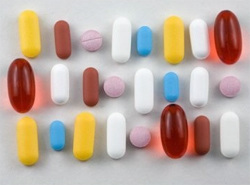
Minerals are also necessary to our body as vitamins. They participate in all metabolic processes, are part of enzymes and hormones, support vitamins activity. They are necessary for constructing bone tissue, for water-salt and acid-alkaline exchange, for blood-forming processes and blood coagulation, smooth and motor muscles.
Minerals are divided into 2 groups: macroelements and trace elements.
The need for macroelements is 100 or more mg per day, the need for trace elements is measured by micrograms.
| Mineral element | Sources / Daily Norm | Flaw | Excess |
| Macroelements | |||
| Calcium CA Need for bone tissue, teeth. Participates in the muscular reduction and transfer of nerve impulses in the process of blood coagulation | Milk and dairy products, egg yolk for adults 0.8-1 g, Children, pregnant and nursing women up to 1.5-2 g | Anxiety, facial ticks, cramps, decreased blood pressure, bone fragility (osteoporosis), deterioration of hair, nails, leather and teeth | Muscular weakness, apathy, heartfelt violation, increased blood pressure, fractures |
| Phosphorus R It is included in the composition of bone and cerebral tissue, participates in metabolic processes, participates in the synthesis of ATP (the substance necessary for muscular abbreviation) | Cheese, cottage cheese, milk, meat, liver, fish, eggs, groats, beans, peas, bread for adult 0.8-1.2, for pregnant and nursing women - 1.5-2 g, for children - 1,2 -1.5 g | Loss of appetite, weakness, tremor, feeling of tingling in the skin, bone pain, growth breach | Reduces calcium level |
| Magnesium MG Participates in metabolic processes, its compounds have vasodilant properties, reduce the excitability of the central nervous system, increase the bore and motility of the intestine | Unprocessed grains, almonds, nuts, dark green vegetables, bananas, chocolate bitter, cocoa for adults 350-400 mg, children 150-300 mg | Excitation of the nervous system up to convulsion, violation of heart rhythm, pulse increase, decreased blood pressure, gastrointestinal disease | Laxative effect, lethargy, muscular weakness, slowing down heart rate, decreased blood pressure |
| Sodium Na The required component of the intercellular fluid, participates in the transmission of the nerve impulse | Salt (sodium chloride) 4-6 g per day | Hypotension, tachycardia, anxiety, headaches, muscle cramps | Strong thirst, increased blood pressure, fluid delay in the body, swelling, in children - excitability, hyperactivity |
| Chlorine Cl Plays an important role in the regulation of water exchange, necessary for the production of hydrochloric acid | Salt Salt (NaCl) about 2 g per day | Muscular weakness, inhibition of breathing | Excitation, increased blood pressure, heartbearance, swelling, breathing difficulty |
| Potassium K Supports acid-alkaline equilibrium, muscle activity; Synthesis of proteins and glycogen | Dried fruits, yeast, legumes, vegetables (potatoes, cabbage, carrots), fruit, cocoa, almonds, peanuts 3-5 g | Sleepiness, irritability, heart rate disruption, decrease in blood pressure, muscle weakness, loss of appetite, nausea, deterioration of intestinal peristals, reduction of urination | Raise reflexes, heartbeat, nausea, spasmodic abdominal pain |
| Sulfur S It is part of amino acids, vitamin B1, contained in Kratin and Melanine | Meat, fish, cheeses, eggs, legumes, bread, cereals, mineral waters with sulphates 850 mg | Tachycardia, increased blood pressure, skin impairment, hair loss, constipation, neurotic reactions. | Sulfur compounds (for example, hydrogen sulfide) are toxic, lead to severe poisoning |
| Microelements | |||
| Iron FE is included in hemoglobin, needed for cellular breathing processes | Liver, kidneys, heart, coarse grinding products, egg yolks, nuts, grain, bean 1-2 mg per day; for Pregnant women - up to 3.5 mg | Iron-deficiency anemia | Vomiting, diarrhea, constipation, increases the risk of atherosclerosis, oncology, cardiovascular diseases |
| Cobalt Co affects blood formation, involved in the formation of insulin, vitamin B12, thyroid hormones | Meat, dairy products, liver, kidneys, beets, radishes, green onions, garlic, parsley 0.2 mg | Weakness, fatigue, anemia, violation of cardiac activity (arrhythmia) | Disturbing of cardiac activity, thyroid failure, increases the risk of thrombosis |
| Copper Cu It is included in the vitamins, hormones, enzymes, participates in metabolism, supports the normal structure of bones, tendons, vessels and nerve fibers | Meat, liver, seafood, vegetables, bread, cereals (oatmeal, buckwheat, millet), legumes 2-5 mg | Anemia, aneurysms of vessels, cardiopathy, osteoporosis, bone fractures, hypothyroidism, metabolic disorders | Violation of liver and kidney functions, brain damage, allergermatosis, hemolysis, anemia |
| Iodine j We are needed to generate thyroxine (thyroid hormone) | Seafood iodized salt 0.1-0.15 mg, for children 0.05-0.1 mg, for pregnant women 0.2 mg | Disruption of the functions of the thyroid gland: hypothyroidism, in children a violation of growth and development, cretinism. | Basedova disease (hyperthyroidism) |
| Fluorine F Participates in the formation of bone tissue, formation of teeth and dental enamel | Drinking water as well as rice, beef, milk, tea, sea fish 0.5-1.5 mg | Caries, osteoporosis | Fluorosis (darkening and destruction of teeth), calcification of ligaments, increasing the density of bones - bone spurs |
| Zinc Zn It is part of many enzymes, it is necessary to generate insulin, immune cells, skin regeneration, hair growth and nails, T.To. Participates in the development of collagen | Beef, liver, nuts, wheat, rice and rye bran, grains of cereals and legumes, cocoa, seafood, bow 10-15 mg for adults and 4-6 mg for children | The deterioration of the skin, gunness inflammation, poor healing of wounds, stratification of nails, the appearance of white spots on them, deterioration of hair growth, their loss, diabetes, infertility, immune failure | Violation of the functions of the pancreas, deterioration of the status of the skin, hair and nails |
| Selenium SE It has an antioxidant effect, slows the aging, protects the body from heavy metals (cadmium, lead), enhances immunity | Garlic, wheat bran, mushrooms, olive oil, beer yeast, legumes, olives, pistachios 0,5 mg | Immunity deterioration, hair and nail conditions, dermatitis | High doses of inorganic selenium potentiate carcinogenesis, the state of nails deteriorates (separating the nail plate) and teeth (enamel damage), can cause Nervous disorders |
| Silicon Si We are necessary for the strength and elasticity of epithelial and connective tissue (leather, tendons, vascular wall) | Topinambur, Algae, Bran, Forest Berries, Greens about 50 μg | It rarely occurs, skin itching can be observed, a decrease in tissue elasticity, an increase in vessel permeability, hair fragility | Inhalation of silicon dust develops Silicosis disease. Manifested by fibrosis of the lungs. |
| Chrome CR Activates the effect of insulin, it helps maintain the level of glucose, regulates carbohydrate-fat exchange | Beer yeast, fish, shrimp, crabs, liver, chicken eggs 0.5 mg | Changes in blood glucose levels, risk of diabetes mellitus, body weight change | Dermatitis, eczema, body allergy |
| Manganese MG Participates in the regulation of the activity of the central nervous system, is important for reproductive function, for muscle tissue | Whole cereals, soy, peas, potatoes, beets, tomatoes, adult tea 0.1 mg, children 0,2-0.3 mg on | ||
Specialized polyvitamins
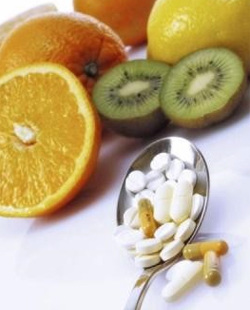
When choosing multivitamin preparations, first of all, attention should be paid to the composition and on the dosage of the names specified in it. It can vary greatly for people of different age categories, leading various lifestyle, for pregnant, athletes, elderly and t.D. Recently, complexes have received widespread «aimed action», For example, for vision, for the cardiovascular system, to maintain and strengthen the immunity, for beauty (strengthening hair, nails, improvement of skin condition), for people, with elevated mental or physical exertion, etc.
Various preparations may contain doses from preventive, to therapeutic and megadosis (depending on the destination), they can also contain various additional components of plant and chemical origin. And taking into account the above deviations that may occur when the daily rate is exceeded, our site will recommend to consult one or another polyvitamins with their doctor.
What are the polyvitamins exist «aimed action» And why their composition includes a different amount of vitamins and minerals? The answer to this question is set out below.
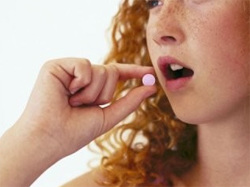
For children It is especially important to obtain a sufficient amount of vitamins and minerals, because their shortage affects physical and mental development. Children's age is considered one of the testimony to prophylactic reception of multivitamin drugs. The pharmacies have a wide selection of children's polyvitamins in various forms (powder, syrup, gel, drops, tablets and pastelines), for various age-related categories of children (peak, multi-tabs, biovitalghel, Vitrum, and DR., As well as vitamin complexes for children prone to allergies - Alvilitil, Vibovit-Baby, Multi-Tabs Immuno KIDS). For kids from 1 year, such forms are suitable as drops, syrup, powder or gel (they can be added to food), older children - tablets and pastinels. Be sure to pay attention to the age recommended for the use of vitamins specified on the package!
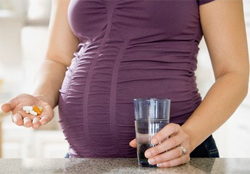
For pregnant A sufficient admission to the organism of vitamins and minerals is simply necessary, the course of pregnancy and the health of the future kid depends on. First of all, a woman during this period needs vitamins C, B1, B6, folic acid. However, the excess of some vitamins during this period is extremely dangerous. Therefore, manufacturers of vitamin preparations have developed complexes designed specifically for pregnant women, given the needs of the woman's body during this period (increased folic acid content, especially in the first trimension of pregnancy, iodine, calcium, iron, also due to the danger of overdose of vitamin A in vitamins for pregnant women It is represented by beta-carotene). Vitamins for pregnant women: Multi-Tabs Perinal, Prognavit, Vitruum Prenatal and Vitrum prenatal Forte, complivit Mom, Elevit Pronatal, Sana-Salt, Alphabet Mamino Health and DR.
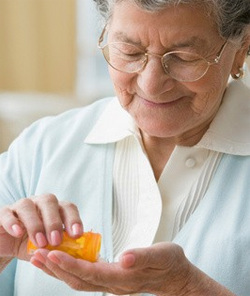
For seniors. With age, the body's ability to absorb vitamins is reduced, in addition, the organism of the elderly is most often weakened by various diseases and drug intake, so the additional reception of the polyvitamins is often necessary for them. Especially high, the need for them in the vitamins of the group B, E, C and A. There are special vitamins, for example, polyvit-geriatric, Gerimax Geriavit Pharmanton, they are characterized by a large content of selenium or chrome, and in Gerimax and Geriavit Pharmant and Ginseng root extract (adaptogen, increasing the total body tone). In addition, elderly persons (especially women) are recommended to use calcium preparations that prevent the development of osteoporosis (calcium preparations with vitamin D - Vitruum calcium, calcium D3 Nicomed, Calc ...)
It is known that the lack of vitamins is reflected in the first place on the state of the skin, hair and nails. For hair health, vitamins A, B2, B6, N; For nails A, D, C, for teeth Ca, D, A, for skin - A, B2, B5, B12, RR, N, E. Therefore, special vitamin and mineral complexes were developed (for example, Vitrum Beauty, Beauty Tabs Charm, Merz et al.).
For health eyes Vitamins A, C and E. Vitamin complexes for view (such as Lutein complex, Vitrum Vihn, Blueberry Forte, Sofya) contain complexes of vitamins and trace elements: a, group vitamins B, E, beta-carotene, s, zinc, selenium, etc., and blueberry extracts, lutein and other vegetable substances that promote eye strengthening preventing violations of violations.
In people with the pathologies of the cardiovascular system The need for vitamins-antioxidants increases (C, E, A, Zinc). Also for the heart is needed vitamins B1, B6, niacin, rutin, etc. For such purposes, preparations are developed: Askorutin, Aevit, Vitamaks Plus, Vitrum Cardio. These complexes are aimed at reducing cholesterol, improved heart and vessels.
There are also special vitamins For people suffering from diabetes, After all, they especially need vitamins E, C, group B, as well as chrome, zinc and selenium (three-visa plus, Vitamax).
Vitamins for prevention and treatment Neurological disorders - This is primarily vitamins of group B (neuromulitivit, Milgamma).
People with elevated mental and physical exertion Especially need vitamins A, C, D, E, B6, so for them there are complexes aimed at improving tone and stress resistance (Supradin, Gerimax Vitruum Super Stress, Berkka, etc.).
However, our site once again reminds that when choosing one or another drug, it is necessary to remember that the dosage, duration of use, using it simultaneously with other drugs, taking into account the presence of certain diseases (and this significantly affects the content of vitamins in the body) - subject of serious reflection. The use of vitamins must be reasonable and thoughtful, it is desirable to conduct it under the supervision of a doctor, with the necessary research for diagnosis and control of therapy.


